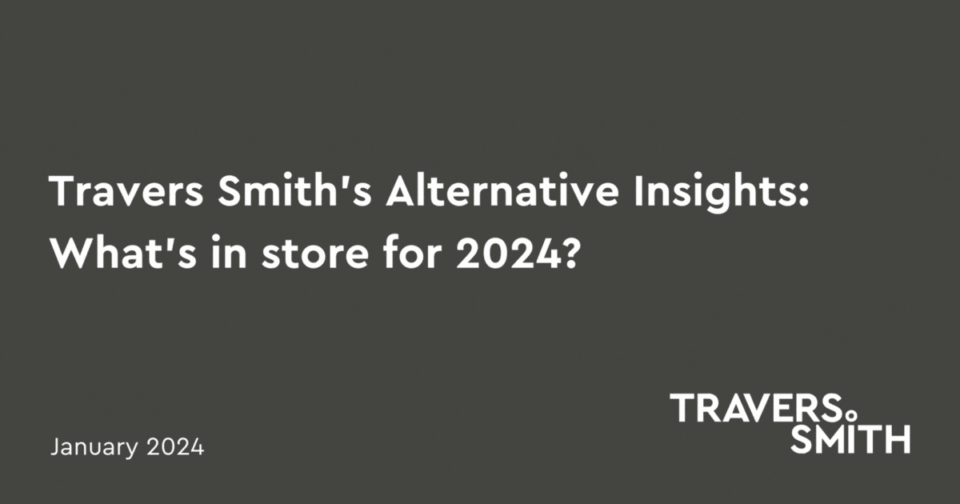A regular briefing for the alternative asset management industry.
If it seems that regulators are constantly writing new rules that affect European alternative asset managers, that’s because they are. Or, at least, they have been for the last few years. 2023 was no exception.
First the good news: the coming year will see fewer new rules being written – in part, because the European Commission will be on an election hiatus. But that doesn’t mean there will be any let up for firms. 2024 is the year when some recently finalised rules will start to bite, and when preparations should begin in earnest for others.
Our annual round up of what to expect in the year ahead – Insights ’24 – was published this week. It’s our take on the key legal, tax and regulatory issues that alternative asset managers should have on their agenda for 2024.
The pace and scale of regulatory change in the EU has been particularly noteworthy in recent years – one consequence of which is that UK and EU laws are starting to diverge quite sharply.
One important area of divergence is on ESG regulation. The EU’s Sustainable Finance Disclosure Regulation (SFDR), which was first implemented in 2021, is still causing headaches for private equity firms, and further change could be on the way. Significant extensions to the (already overly complicated) reporting templates have recently been mooted. It is not yet known when, or even whether, the changes will be made – but firms reporting under Article 8 or Article 9, or in the process of launching funds with such a categorisation, will need to keep a close eye on that this year. More fundamental changes to the SFDR are also in the works, but these are some years away.
Sustainability teams should also take note of the new EU Taxonomy “screening criteria”, which came into force at the beginning of the year, and the guidance published in December. Taxonomy reporting is still a minority sport for alternative asset managers – but as Taxonomy alignment scores become more prevalent in corporate reporting, asset managers will also be expected to report them to LPs.
And ESG specialists will also be busy dealing with the biggest change to corporate reporting in at least a generation: the EU’s Corporate Sustainability Reporting Directive (CSRD). Although the first wave of the CSRD will largely miss the private markets, the second wave – with sustainability reports due in 2026 – will catch many firms and their large EU portfolio companies.
Compliance with the CSRD requires a lot more than just additional corporate reporting. That is the end result, but the process to identify the data required – not just from a company’s own operations, but also from its “value chain” – is complex and time-consuming. Now is a good time to begin the scoping exercise.
The UK already requires asset managers with assets under management (AUM) of £5 billion or more to report using the TCFD template on climate-related risks and opportunities, but 2024 is the year when the rubber hits the road for most private fund sponsors: firms with between £5 billion and £50 billion under management will have to issue their first mandatory TCFD reports this year, covering 2023. (Check if you are covered using our app.)
Legal and compliance teams will continue to have their hands full this year, although at least the EU’s flood of new rules may turn into a slow and steady trickle.

